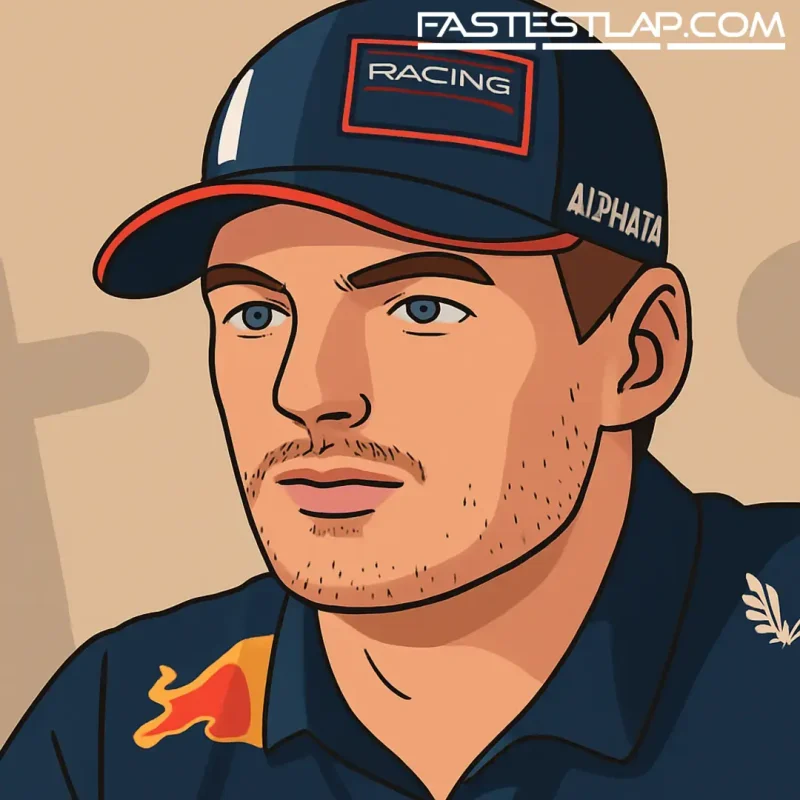Verstappen fastest on Friday in Mexico City — and deeply unimpressed with Red Bull’s race pace
Max Verstappen topped the times in second practice at the Mexico City Grand Prix, then walked away sounding like a man who’d just been handed a hot potato for Sunday.
The Dutchman sat out FP1 as Red Bull ticked off one of its mandatory rookie outings with Arvid Lindblad in the car. No matter — Verstappen returned in FP2 and immediately set the benchmark, more than two-tenths clear of Charles Leclerc with Mercedes rookie Kimi Antonelli a tidy third. Lando Norris, Verstappen’s nearest championship threat on the day, was only fourth.
That was the good news. The bad news? Verstappen didn’t like a single thing he felt once the runs got longer.
“On the soft, we managed to do a good lap. The rest, everything else, was pretty bad,” he said, blunt as you like. “On the medium, short run was not great. And the big problem is the long runs, where we seem to struggle a lot. So that is, of course, a big concern for the race.”
Mexico City rarely hands out freebies. At more than 2,200 meters above sea level, the air is thin, engines and brakes run hot, and despite big wings on the cars, downforce is a fraction of what teams enjoy elsewhere. The grip comes and goes, and when it goes, it tends to do so rapidly. That’s exactly what Verstappen described.
“I don’t know yet,” he said when pressed on the root cause. “The balance wasn’t even off, it was just no grip. That is the bigger concern. As soon as you go into a sustainable run, tyres are going hot. We were nowhere, so that’s a tough one.”
Ferrari reckoned McLaren looked strongest over the long runs, which only heightens Red Bull’s concerns given where the title fight sits. Verstappen has slashed his deficit with a ferocious run since Monza — three wins in the last four — and, with five races and two sprints left in 2025, he’s trimmed the gap to championship leader Oscar Piastri to around the 40-point mark. The momentum is real. The margin for error is not.
That’s why Friday’s chatter mattered more than the headline time. If Red Bull can’t find race pace at altitude, single-lap heroics won’t save them.
“You’re not going to win the race like that,” Verstappen said of his one-lap speed. “You can be fast over one lap, but if you have absolutely zero pace in the race, then it’s going to be very tough. I prefer to be fast in the race and not so fast over one lap.”
There was at least one small positive for the champions: the car responded well enough on the soft tyre to deliver a banker lap without much build-up, which suggests the underlying balance isn’t miles off. But the temperature window looked knife-edge on the mediums, and when the tyres tipped over, the RB became skittish and slow. That’s fixable — ride heights, ducting, and a calmer aero platform for high-speed yaw are all on the overnight menu — but the turnaround needs to be decisive.
Elsewhere, Leclerc looked comfortable from the jump, while Antonelli continues to underline why he’s had a straight line into the big time. As for McLaren, Norris didn’t headline Friday, but his long-run traces kept Ferrari’s attention, and that tells its own story.
The wildcard is the track itself. Mexico’s surface tends to evolve more than most across the weekend; it rubbers in late and punishes impatience early. If Red Bull’s long-run woes were a combination of traffic, track state and a too-narrow operating window, there’s a path out. If they’re structural at this altitude, Saturday will turn into damage limitation.
Either way, Verstappen made it clear he knows what matters.
Fast on Friday? He’s done that a thousand times. Fast on Sunday, with tyres that don’t cook themselves after five laps? That’s the homework. And if Red Bull want this late-season surge to mean something in a title race that Piastri still controls, they’ll need the answers by nightfall.




